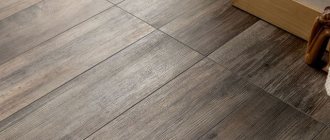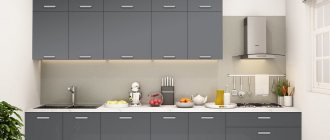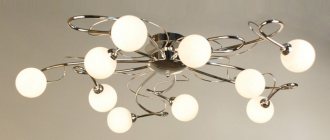Repair is always a problem of choice. You have to choose from the interior as a whole to its components in the form of finishing and flooring. A wide range only complicates the choice, providing all sorts of layout options that allow you to experiment with materials, colors and textures. For example, porcelain tiles for kitchen floors and the combination options are so varied today that the average person simply can’t figure it out without the help of designers. But the ideal combination of decorative and technical capabilities of tiles will not only enhance the room, but also emphasize its advantages, while skillfully hiding the shortcomings.
Areas of application of porcelain stoneware
The advantages of porcelain stoneware satisfy all the requirements for floor coverings in residential premises and in the local area. The material fits perfectly into the interior of public places, kitchens, hallways, baths, swimming pools, bathrooms, storage rooms, external stairs, sidewalks approaching the house and garden paths.
Matte, structured or lapped surfaces are suitable for kitchen, dining room and hallway floors. The technical characteristics and depth of the pattern easily withstand the operating conditions in the designated premises. We are talking about temperature changes, the formation of pollution and frequent attendance.
The rough base of the tiles has low slip, which makes porcelain tiles suitable for use in hallways, swimming pools and outdoor patios. The properties of the material contribute to the preservation of the appearance and integrity of products that are not afraid of the negative effects of external factors, including evaporation, humidity and the use of aggressive detergents.
Porcelain tiles with a pattern for the floor in the kitchen and hallway are an ideal option. The glossy base will create a pleasant atmosphere in the room, the final tones of which will depend on the chosen pattern, structure, color and size.
Subtleties of design
Porcelain tiles on the kitchen floor look luxurious and give the room a rich look. Therefore, it is necessary to select all the furnishings and accessories so that the harmony of splendor is not disturbed. That is, you will have to fork out not only for the arrangement of the floor, but also for the corresponding furniture, accessories and wall coverings.
Many people like original kitchen interiors and prefer dark artificial stone floors. This is fashionable, but not suitable for everyone, because such floors require the use of branded care products and frequent washing. The dark color shows streaks and water drops leave marks.
Remember that for most stylish kitchen interiors, a beige floor color or shades of gray with dark specks are suitable. This color scheme is advantageous because dirt is not noticeable on the stone and speckled porcelain tiles are cheaper, while still looking quite presentable.
Design of floors in the kitchen and hallway made of porcelain stoneware
The design of the floor in the hallway made of porcelain stoneware, as in the kitchen, should be developed taking into account the technical and visual characteristics. Tiles can either increase or decrease space, add shine or add confusion to the overall picture.Porcelain stoneware floor panels: layout options and manufacturers
Designer tips for choosing flooring:
- White porcelain tiles for the floor visually increase the area of the room.
- If it is necessary to raise the ceilings and expand the kitchen, you should use the original masonry method (herringbone, diamond, staggered, diagonally, ladder).
- Dark tiles are installed in large rooms, light tiles in small ones.
- Shiny surfaces are suitable for small spaces.
- Porcelain tiles are laid instead of baseboards.
- Large slabs are not recommended for use in small rooms; they narrow the volume of the floor.
- Wood-look tiles blend seamlessly with parquet boards and laminate flooring.
- The combination of floor coverings works for zoning, separating the dining area or hall space from the cooking area, in the case of the kitchen, and from the entrance - from the corridor.
- Combining floors is most important in elongated rooms, which thus expand, and with the help of additional curves and straight lines, monotony is lost.
- When laying tiles in large rooms, it is recommended to introduce additional nuances of color and shape by placing tile panels in the center, using several types of facing material, and performing mosaic edging.
- Matching or bringing tiles closer to the color of floor coverings in other rooms allows you to achieve harmony. The most advantageous options: beige porcelain tiles and brown laminate, red porcelain tiles for the floor and brown boards, brown tiles and linoleum of the same color.
- Contrast allows you to achieve originality. Gray porcelain tiles for the floor with red, black tiles with white. Modern design requires accents and unusual combinations.
- Large tiles with a three-dimensional pattern visually increase the space, and light colors and a smooth surface only enhance this effect.
- Black and green porcelain floor tiles absorb light well, but even the slightest damage and scratches are visible on them.
- A cozy atmosphere is created by surfaces of warm colors and textures.
- It is recommended to cover the front part of the hallway and the work area in the kitchen with the most durable tiles that are resistant to mechanical and chemical attack.
Porcelain tiles are the most practical choice for the kitchen and living room, where the floors are constantly exposed to aggressive influences. Modern tiles look elegant and appropriate, visually adding value to the interior. At the same time, it does not lose its original aesthetics for a long time and for many years it looks as if it was just laid on the floor yesterday.
DIY porcelain tile installation
The tiles must be inspected before installation. Many manufacturers at the factory cover the front side with a protective layer - technical paraffin. It prevents scratches during transportation. Paraffin must be removed before installation. It is easy to clean with a spatula. Then the surface is washed with soapy water (with any detergent), after which the porcelain tiles are dried. It is prohibited to wet it before installation.
A little about the conditions under which work should be carried out. The minimum temperature at which porcelain stoneware can be laid is +5°C, the optimal is +18-20°C. If it is placed on a heated floor, the heating must be turned off no later than 36 hours before the start of work, and can only be turned on 3-4 days after installation is completed.
Laying methods
Porcelain tiles can be laid in any pattern that you like. You can combine different sizes, colors, and embed decorative elements.
Simple laying schemes for porcelain tiles
In addition to choosing a laying pattern, you need to decide on the width of the seam. It can be from 0 mm to 10 mm. Seamless installation is most often used with polished material. Then the effect of a continuous surface is created. This option is not at all suitable for heated floors - it does not compensate for thermal expansion.
In the case of laying with seams, they are maintained using special inserts, traditionally using plastic crosses of the required size. After the glue sets, the seams are filled with a special paste and rubbed. The color of the paste can be matched or contrasting.
Options for combining several colors
Floor mounting
Next, dilute the glue according to the instructions (don’t make a mistake with the volumes, as it hardens quickly). A layer of glue is applied to the primed floor using a regular spatula. Usually about a square meter is laid at a time - there is no more time and the composition will begin to harden.
The thickness of the standing adhesive depends on how smooth the base is, the dimensions of the tile and the properties of the adhesive. That’s why it’s difficult to speak in general. But from experience we can say that when laying porcelain stoneware tiles up to 60 cm in size on a perfectly flat floor, you can take an 8 or 10 notched trowel and spread the glue with it. When settling, the actual layer is 3-4 mm. This is quite enough. If you need more complete information, it can be found on the official website of the glue manufacturer.
Laying should begin from the center of the room. To make it easier to navigate, two lines are marked on the floor with a coated paint cord, which at the intersection give the center. Relative to this center, further installation is carried out, moving in one direction and the other towards the walls.
The corner of the tile may be in the center (as in the photo below) or its middle - depending on the design. In general, in order to evaluate how your chosen layout scheme will look, you should lay it out “dry”. In addition to the fact that you will be able to really see whether everything will look good and change the layout of the luggage if necessary, you will also have a clear idea of where which cuts are needed and when to lay which tiles.
Laying is carried out relative to the center of the room
So, the laying of porcelain tiles occurs in the following sequence:
- We applied glue to the floor measuring approximately 1 sq.m.
- Using a notched trowel, remove the excess, forming a relief.
Apply glue and form a relief
- We take dry porcelain tiles and place them in the right place. It must be firmly pressed down and moved back and forth or with a circular displacement.
- The fragment is put in place, crosses are inserted (if the installation has a seam).
Place the tile, press it down, move it
- They take the second one and lay it in the same way.
When laying, glue often appears in the seams, sometimes it gets onto the front surface. The fact that the glue protrudes is good, it means there are no voids under the tiles. But it must be wiped immediately with a damp sponge, then with a dry cloth. There should not be even the slightest trace left on the surface: if the glue dries, it is almost impossible to remove it.
Option for laying porcelain stoneware under wood
The tile installation process is repeated over and over again until the entire space is filled. In this case, you need to monitor the planes so that the seams are even and of the same thickness, and the edges of the tiles are in the same plane. All this is checked with a construction bubble level. When laying porcelain tiles with your own hands, it is worth remembering that you can adjust the position of the tiles only within 4-5 minutes after laying the mortar. Then it will seize, and you will not be able to do anything. Therefore, check the planes and seams regularly.
When laying, you must constantly monitor the plane
Please note that there should be no voids under the tiles, even minimal ones. Then the finish will last a long time and without problems. If there are voids, porcelain tiles in this place may crack or bounce off.
Features of installation on the wall
When installing porcelain tiles on the wall, special glue is also used. The peculiarity is that installation begins from the bottom, and from the second row. Along the perimeter of the wall, mark a line where the first row of porcelain tiles will end (including the seam). A wooden plank (necessarily level) or a profile for gypsum board is nailed along this line. The second and subsequent rows will “stand” on this bar. This is necessary, since the weight of even one element is quite substantial, and with glue the result will be even more. If you simply install such a tile on glue, most likely it will float - move down. That is why this support is needed.
When laying on a wall, support is required - a block or profile
Remove the plank after the topmost row is laid, and then lay the first one. By this time, the second row has long been “grabbed” and cannot be moved, so you can safely work.
Grouting joints
The selected paste is diluted according to the instructions on the package. The consistency should be close to sour cream, maybe a little thicker. Take a rubber spatula and scoop out a small amount of grout. Apply the paste using oblique motions relative to the seam, then pick up the excess by running a spatula along the seam.
Grouting porcelain stoneware joints
Having processed a certain piece of 1-1.5 squares, wipe off the remaining paste with a clean damp sponge. You also need to carefully remove the paste; it sticks a little worse than glue.
How and what to cut
Thick porcelain tiles are cut using special equipment with water blowing. But this type is used very rarely for finishing the floor in an apartment or house. Typically, the thickness of porcelain stoneware floor tiles is 4-8 mm. It’s very rare to take a thicker one: it’s too expensive, and the weight is decent—it’s not worth putting a lot of stress on the floors unnecessarily. Such specimens can be cut with a good tile cutter or grinder. If you find them, take special ones for porcelain stoneware; if you can’t find them, you can try discs for stone.
The tile cutter must be of high quality, with a massive frame. It is very important that the cutting element (roller or rod) is of good quality.
You can walk on the tiled floor three days after installation.
Porcelain tiles for the kitchen and hallway: which one to choose?
For the above premises, it is very important to choose impact-resistant tiles. This property makes porcelain stoneware superior to other floor coverings. It does not lose color because it comes from the depths. It is indifferent to moisture, because its water absorption is close to zero.
No less important is the slip rate. You should pay attention to it at the stage of purchasing flooring. Porcelain tiles with anti-slip levels R10 and R11 are suitable for the kitchen and hallway.
You should take into account the fact that most anti-slip tiles have irregularities called relief. Over time, a large amount of dirt accumulates in these small cracks, which is difficult to access and difficult to remove. Therefore, it is advisable to choose tiles of dark colors, because light ones quickly become dirty and acquire an unpleasant tint. If the desire to buy a beige or white floor covering is stronger than the reluctance to constantly clean the floor with abrasive substances and a stiff brush, you can safely go to the checkout. Those for whom practicality is more important should choose darker textured tiles.
The same can be said about light-colored “seams” as about tiles - after a short period of time they will get dirty. Therefore, for the kitchen and hallway it is worth choosing a less easily soiled grout.
The next question is: how many tiles should I buy? The answer depends on the area of the surface being tiled, the size of the slabs and the installation method. Experts recommend purchasing porcelain stoneware with a small margin of +10-15%.
Matte porcelain tiles are considered the best option for the kitchen and living room. It has all the qualities necessary for these premises: it does not slip even when wet, it is durable and wear-resistant, and is also easy to clean and wash. Technical porcelain tile is also quite good in care and use, but it creates a less attractive decor, and its color range is somewhat poor.
Features of operation
Porcelain tiles are a floor you want to say thank you to. No matter who drops, spills or smears anything on the floor, porcelain stoneware doesn’t care. It is not afraid of moisture, water, acid- and alkali-containing products. Contaminants do not eat into it and are easily removed. It is almost impossible to scratch high-quality porcelain tiles, even if you move furniture every day.
Fashionable flooring 2020: trends under your feet
The trend for responsible consumption, the craving for natural flavor, nostalgia for the 70s - how did all this affect floor coverings? We'll tell you and show you what fashionable floors look like in 2020.
You need to decide which porcelain tile to choose for the floor: glossy or matte. Glossy polished porcelain tiles look impressive, but can turn your floor into a skating rink. This category of porcelain stoneware is more suitable for wall cladding.
If you are attracted to the idea of a glossy floor, choose partially polished tiles; they are not so slippery and have higher wear resistance, but not high enough to be used, say, in a hallway.
A practical choice for flooring is matte porcelain tiles. This is a more wear-resistant and easy-to-use flooring material than glazed gloss.
Another way to stand firmly on your feet is porcelain tiles with a special anti-slip surface.
Images provided (section A21)
When choosing porcelain tiles, pay attention to the following parameters:
- Strength.
- Abrasion resistance.
- Slippery.
To understand which porcelain tile to choose, consider the traffic flow of the room.
The more traffic a room has, the higher the resistance of porcelain stoneware to abrasion should be.
There are five classes of porcelain tiles with different degrees of abrasion: (PEI I - PEI V - from the least to the maximum degree of resistance). For residential interiors, products of classes PEI I - III are usually sufficient.
Porcelain tiles cannot be thinner than 8 mm, and the weight of a square meter of such material should be about 19 kg. Products with less thickness and weight will not be wear-resistant enough in everyday life.
Combination and styling options
Choosing ceramic tiles for the kitchen floor
Tile laying is done in several variations. At the same time, the diversity of the tiles themselves provides endless possibilities for imagination. Basic installation options:
- Chess board. Traditional and common option. Involves the use of two tile colors. Most often these are contrasting colors. The most popular combinations are black and white, black and red, white and red, beige and brown, gray and white or black, etc.
- Laying diagonally. Involves the use of square tiles.
- Offset by half size. It is possible to use both square and rectangular tiles.
- Herringbone. Externally similar to parquet. Rectangular tiles are used. Porcelain tiles with a wood pattern look the most expressive.
- Modular grid. Using tiles of the same color in different shades.
- Mosaic made from tiles of the same or different sizes. The color and texture may also differ. Both traditional and diagonal masonry are used.
- Traditional installation using small tiles laid diagonally.
The kitchen is a great place to experiment. It should not only be comfortable and tasty, but also interesting and not boring. Thus, a floor tile pattern can be laid out in the form of a carpet, ornate patterns, ornaments, and even paintings with all kinds of images. It all depends on imagination and possibilities.
Differences between porcelain stoneware and ceramic tiles
Today there is such a wide range of construction products on the market and choosing floor coverings is sometimes difficult, especially when the choice is between two materials - porcelain stoneware and ceramics, which are the same coatings in composition. So what's the difference? To be prepared for a purchase, you need to study each material separately.
Ceramic tile
Ceramic floor tiles have a second name - tiles and consist of sand, minerals and clay. The material is made by pressing and firing, after which a layer of enamel is applied to the surface and the tile undergoes a secondary firing. Tiles that have gone through two stages of firing have less strength and are used for wall decoration. The material that goes through a more powerful press and one stage of heat treatment is used as a floor covering, since its porosity is reduced as much as possible.
Ceramic floor tiles have the following advantages: hygiene, a wide range of colors and patterns, durability of the material and cost.
Porcelain tiles
Porcelain tiles are the best choice for the kitchen.
Porcelain tiles for flooring are a material that appeared not so long ago in Italy, which is why Italian porcelain tile manufacturers are considered to be the best. The composition of this material is no different from the composition of tiles, but the difference lies in the production.
- A coloring pigment is added to the mixture for making the material, which gives the porcelain stoneware color. Compare porcelain tiles with tiles - you will notice that the first has a uniform color throughout its entire thickness. The tile has only a top layer of enamel.
- The finished porcelain stoneware mixture undergoes drying and two stages of pressing and increasing weight in the second stage.
- Porcelain stoneware goes through a temperature treatment of 1300-1400 degrees, which reduces the porosity of the coating.
Because of these differences, porcelain tiles are an improved version of tiles that have advantages and disadvantages.
Caring for porcelain tiles in the kitchen
Porcelain stoneware perfectly withstands any negative influences, but no one has canceled its cleaning from contaminants. And the grouting of tile joints is quite vulnerable to aggressive environments and dirt, which can be destructive under strong mechanical stress. Therefore, timely cleaning with appropriate preparations is not only recommended, but necessary.
- Protection from mechanical damage. The best way to protect is to rub the tiles with natural or artificial wax. After processing, polishing is performed using a rotary machine. During these manipulations, the floor looks more aesthetically pleasing, and washing the surface does not harm the material.
- Preservation of polished coating. This is only possible with timely removal of abrasive substances. Even the most ordinary dirt and sand is a strong abrasive that can ruin the appearance and quality of the floor covering. This problem is most relevant for polished porcelain tiles. The optimal solution is wax-containing products and water-repellent preparations.
- Cleaning from contaminants. The cleaning agent is selected depending on the type and type of contamination. Coffee, tea and juices will remove the baking soda solution. Stubborn stains can be treated with chlorine and alkaline preparations. They also cope with blood, oil and wine stains, which are more relevant for the kitchen than others. And gasoline and acetone can handle dried varnish, glue, resin and chewing gum.
Daily care of porcelain tiles in the kitchen and hallway comes down to wet cleaning with the addition of soda, which softens the water. If necessary, you can enhance the effect of the solution with detergents. But there are drugs that should never be used, these are:
- acid-containing agents that destroy grout in tile joints;
- dry cleaning powders with abrasive substances that damage polished and glazed surfaces;
- mechanical preparations and metal scrapers with brushes.
Regardless of whether dark or light porcelain stoneware is chosen as a floor covering, it requires proper care. The kitchen is the warmest place in the house. It should also be the cleanest, because food preparation processes take place here. Therefore, it is so important to arrange the room not only to your taste, but also to your mind.











